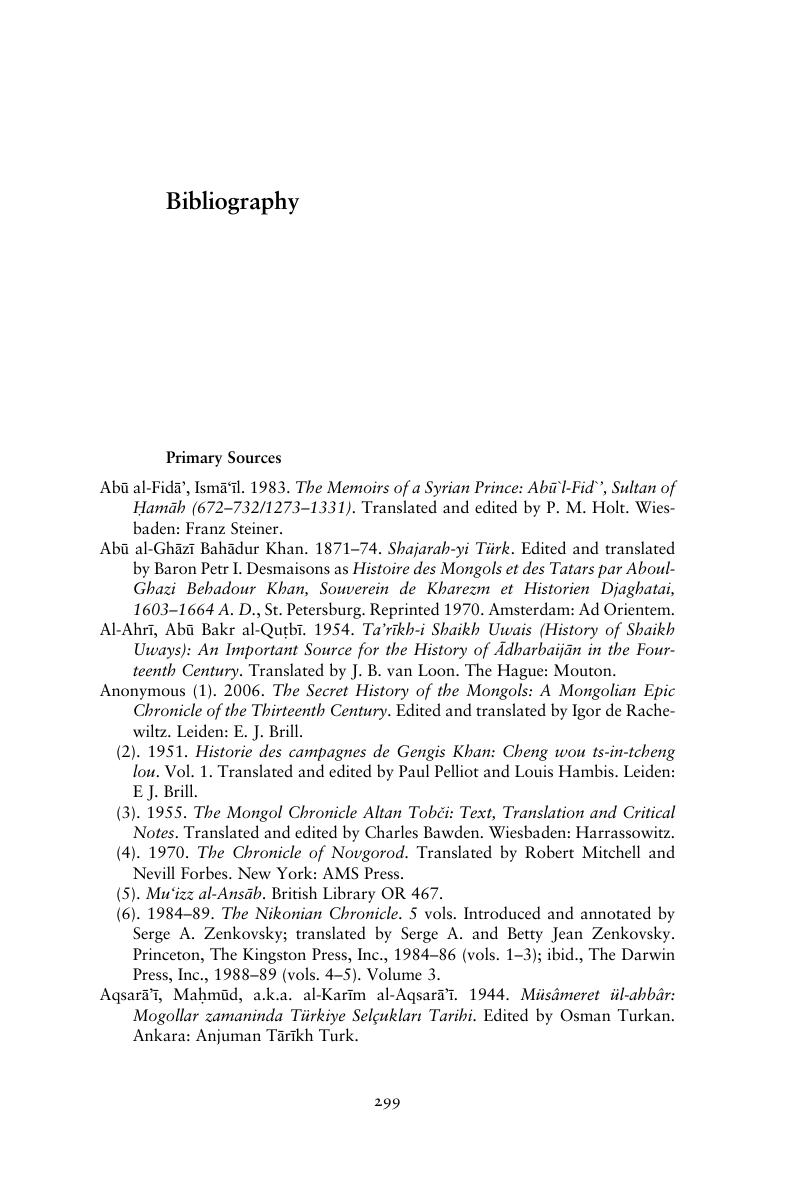Book contents
- Women and the Making of the Mongol Empire
- Cambridge Studies in Islamic Civilization
- Women and the Making of the Mongol Empire
- Copyright page
- Dedication
- Contents
- Figures
- Family Trees
- Tables
- Maps
- Acknowledgments
- Note on Transliteration
- Introduction
- 1 Women in Steppe Society
- 2 Hö’elün and Börte
- 3 Conquered Women
- 4 Women and the Guard, the Army, and Succession
- 5 Sons-in-Law, Daughters, and Conquests
- 6 Töregene
- 7 Sorqoqtani and Oghul-Qaimish
- 8 Consort Houses in the Successor Khanates
- 9 Consort Houses in the Ilkhanate
- Conclusion
- Bibliography
- Index
- Other Titles in the Series
- References
Bibliography
Published online by Cambridge University Press: 10 July 2018
- Women and the Making of the Mongol Empire
- Cambridge Studies in Islamic Civilization
- Women and the Making of the Mongol Empire
- Copyright page
- Dedication
- Contents
- Figures
- Family Trees
- Tables
- Maps
- Acknowledgments
- Note on Transliteration
- Introduction
- 1 Women in Steppe Society
- 2 Hö’elün and Börte
- 3 Conquered Women
- 4 Women and the Guard, the Army, and Succession
- 5 Sons-in-Law, Daughters, and Conquests
- 6 Töregene
- 7 Sorqoqtani and Oghul-Qaimish
- 8 Consort Houses in the Successor Khanates
- 9 Consort Houses in the Ilkhanate
- Conclusion
- Bibliography
- Index
- Other Titles in the Series
- References
Summary

- Type
- Chapter
- Information
- Women and the Making of the Mongol Empire , pp. 299 - 322Publisher: Cambridge University PressPrint publication year: 2018



